Last-Minute NYC Holiday Gift Guide 🎁
We’ve created a holiday gift guide with presents for the intrepid New Yorker that should arrive just in time—


Webster Hall, located in Manhattan’s East Village, is today known, more or less, as a concert venue for young New Yorkers. But this concert hall has been around for over 100 years with its reputation changing with New York City history. Built in 1886 by Polish cigar maker Charles Goldstein, it operated first as a “hall for hire” to be rented out for various events, soirees, personal occasions. Since then, the venue has changed hands multiple times, gone through a few fires, and changed as often as New York City did socially and musically. For over 100 years, this venue has been hosting events for the people who would shape our city’s history. Here are the top 10 secrets of Webster Hall
From 1953 to 1968, RCA Records owned Webster Hall, completely refashioning it with state-of-the-art technology to make it their East Coast recording studio. “Hound Dog” was recorded and cut all in one hot afternoon in July of 1956. Despite the sweltering heat, Elvis did 31 takes of the song until he got the sound he wanted. The single was released to shops only eleven days later. At Webster Hall, RCA studios would go on to record albums of many famous musicians, such as Harry Belafonte, Tony Bennet, Frank Sinatra, and Louis Armstrong. It also recorded many broadway songs from Carol Channing’s original Hello, Dolly!, Fiddler on the Roof, and Ethel Merman’s Annie Get Your Gun.
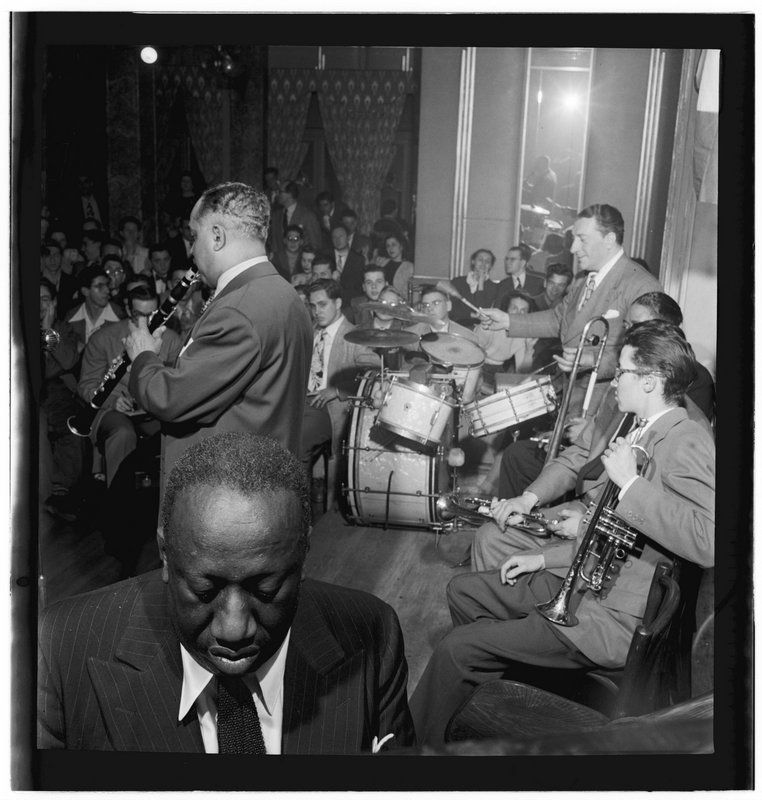
Portrait of James P. (James Price) Johnson, Albert Nicholas, Johnny Windhurst, Marty Marsala, Sandy Williams, and Danny Alvin, Webster Hall, New York, N.Y., ca. June 1947]. Photo by William P. Gottlieb from Library of Congress.
Once the hall came into RCA’s possession and became more of a music venue, many famous artists had their first live performances and recording done here. On February 2, 1962, Bob Dylan was recorded for the very first time playing the harmonica on the title track of Harry Belafonte’s Midnight Special. His first album would be released a month later in March 1962. In the 1980s, Webster was under new ownership and renamed “The Ritz” where U2 would have their first ever show US on December 6, 1980. As “The Ritz,”Webster became a very popular rock venue where artists like Eric Clapton, The Pretenders, Prince, Metallica, Aerosmith, and Guns n Roses performed. It was also where Tina Turner and Sting had their respective first live solo performances.

In the 1920s, Italian-born anarchists Nicola Sacco and Bartolomeo Vanzetti were arrested and sentenced to death for murdering a Massachusetts paymaster and his guard and stealing more than $15,000. The crimes though not particularly interesting sparked much outrage and protest across the East Coast because of the lack of evidence for the conviction. Throughout the 1920s during the trial, the members of Sacco and Vanzetti’s Defense Committee would meet in Webster Hall to prepare for the trials. Despite their effort and the protests of hundreds of people around the world, on August 23, 1927, Sacco and Vanzetti were executed via electric chair.
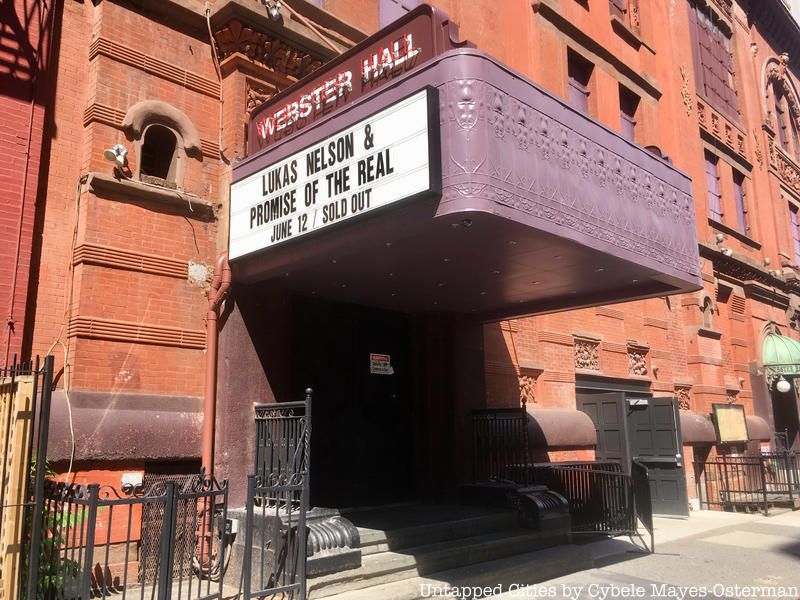
In the 1920s, Webster Hall gave way to some politically charged, outlandish masquerade balls. The crazy costume and masquerade parties allowed people who felt they did not belong in the city’s mainstream society to openly express themselves. Particularly, the gays and lesbians of the community whose behavior might seem flamboyant in some of the city’s neighborhoods would be welcome here. Not only was Webster Hall an important location for early LGBTQ culture, but for anyone that felt they belonged outside of mainstream society in areas such as the arts, could freely express themselves through costume and participate in odd, eccentric parties.

The 18th Amendment on January 17, 1920 mandated a nationwide Prohibition on alcohol bringing the United States into what would be known as the Roaring Twenties. Across the country speakeasies opened up to let people enjoy alcohol illegally. Webster Hall was one of those places which the police turned a blind eye, allowing patrons enjoy alcohol that never seemed to run dry in the hall. It is rumored that infamous mobster Al Capone owned the hall during the 1920s. This past January, Webster Hall hosted its 4th Annual Beer and Whiskey Festival called East Ville de Folies themed after one of its largest parties “The Return of John Barleycorn” held after the repeal of the 18th Amendment.
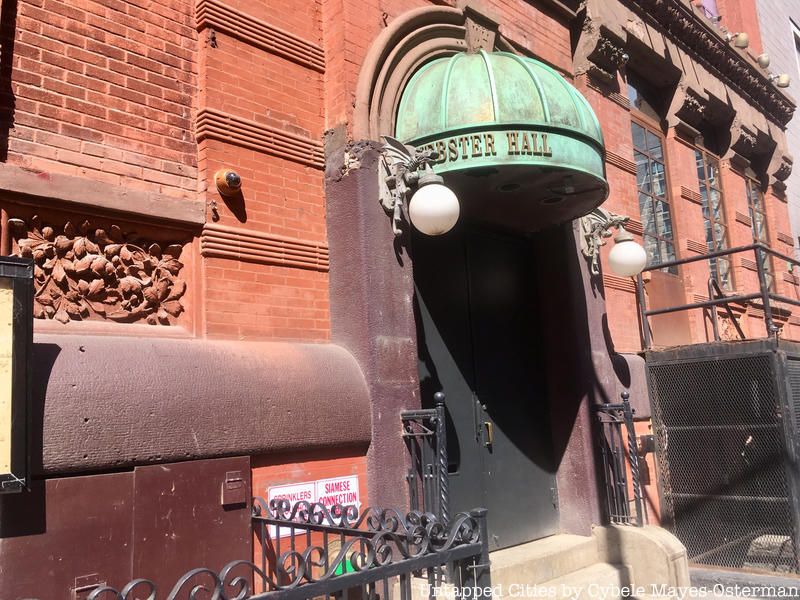
In the years 1911, 1930, 1938, and 1949, Webster Hall was damaged by fires. The one in 1938 was so bad it killed two people. Though most of the hall is still original, it did lose its original mansard roof to the fire in 1949. That particular fire was caused by a lit cigarette and burned for two days straight. After the last fire, the purpose of Webster Hall needed to be reassessed. And so, it became RCA Records Studio.
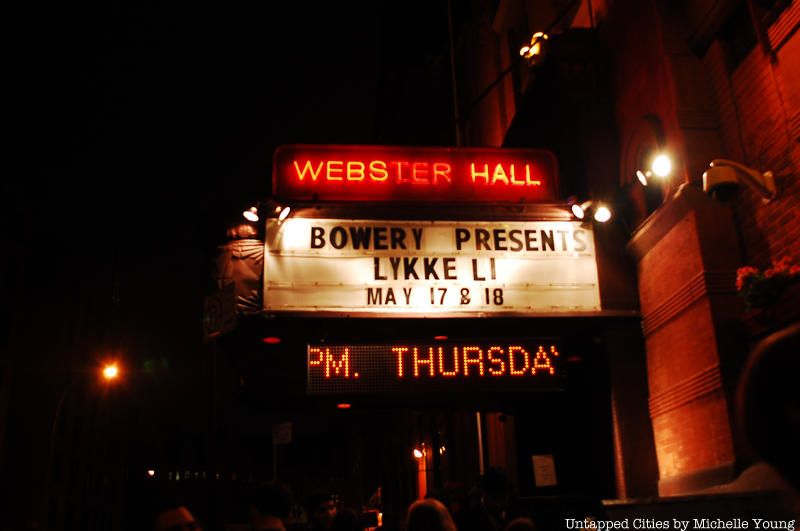
The parties during the 1900s got so wild that the hall got this nickname removing any kind of image of respectability original owner Goldstein had in mind. According to a Bowery Boys podcast, the parties were so lavish, full of dancing, and crazy behavior that the wealthier populations living uptown started to come down to enjoy themselves. It was the place where some of New York City’s first drag parties happened, and where many artists, small-time and famous would come and party. Apparently, Marcel Duchamp once swung in the hall’s chandelier. Even through all the debauchery, Webster Hall was never permanently closed but the police came plenty of times to temporarily close it after some particularly rowdy parties.
 Garment workers at Webster Hall. Photo from Library of Congress.
Garment workers at Webster Hall. Photo from Library of Congress.
Original owner and commissioner of the building, Charles Goldstein, leased the land from Rutherford Stuyvesant to create a hall that would be a gathering place for the immigrants and blue-collar workers of the East Village. The hall was built for more respectable gatherings like formal occasions and personal celebrations, a place for the community to have a place to meet and hold events.
But as the history of Webster Hall has showed us, the original intention of the building was basically forgotten since it’s known mostly for its lascivious past. In fact, there used to be a school next to Webster Hall. But before it could even be built, the school complained to the city already sensing the indulgent reputation and trouble it would bring. But Goldstein won the case, Webster got built, and the school soon moved somewhere else.
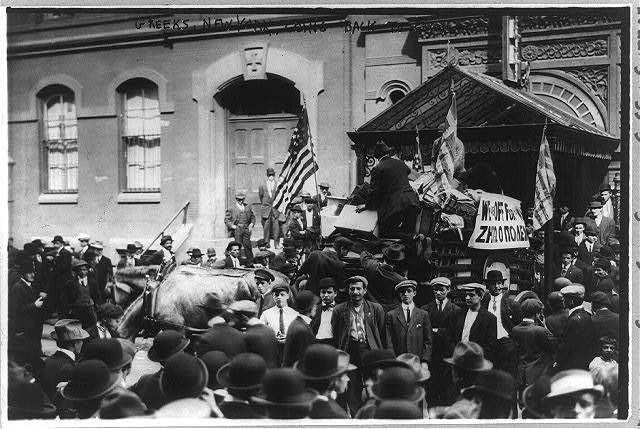
Greek Americans rallying outside Webster in 1912 towards the end of the Balkan War. Image from Library of Congress.
Webster Hall has been the place of many rallies and strikes in the late 19th and 20th centuries. In April 1888, one year after the hall’s construction, Samuel Gompers led a group of striking brewery workers in front of the hall. Emma Goldman, the “High Priestess of Anarchy,” threw a fundraiser in November 1906 for her journal Mother Earth, a ground-breaking, controversial collection of anarchist and radical writings on current events. But in the true style of Webster Hall, the police came and crashed the fundraiser. Margaret Sanger, before she was the mother of the birth control movement, in 1912 led a protest where she filled Webster Hall with 119 starving children of Massachusetts Mill Workers to call attention to their parents’ horrible working conditions.
The hall was also the founding site for the Socialist Labor Party and Gompers’ Progressive Labor Party. Once the building was bought by RCA Records, although it wasn’t a public performance space anymore, RCA did rent it out on multiple occasions when recording wasn’t in session. The notable example is in 1964 when Robert F. Kennedy made an appearance at a campaign rally for his bid for the New York Senate seat.
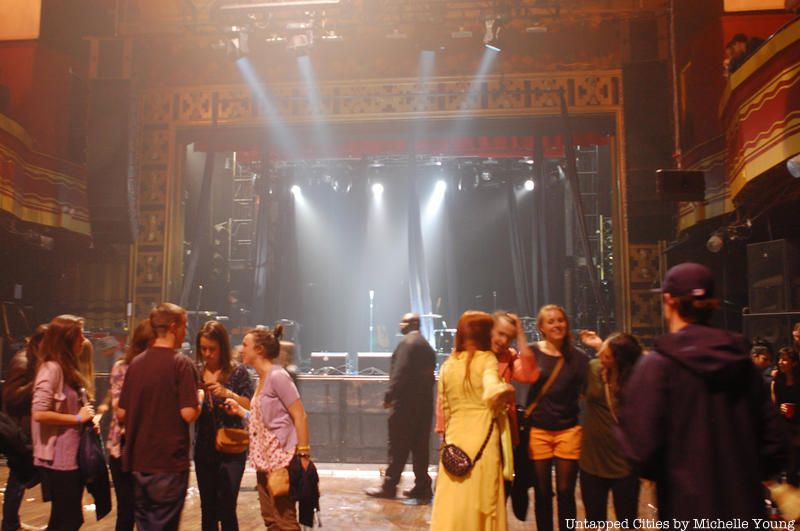
On March 18, 2008, the Landmarks Preservation Commission officially named Webster Hall a New York City Landmark not only because of the building’s architecture, but because it represents the cultural, political and social history of the East Village. Its designation was pushed by the Greenwich Village Society for Historic Preservation which in 2007 provided the Landmarks Committee with extensive research on the history of Webster Hall.
Next, check out The Top 10 Secrets of Carnegie Hall in NYC
Subscribe to our newsletter